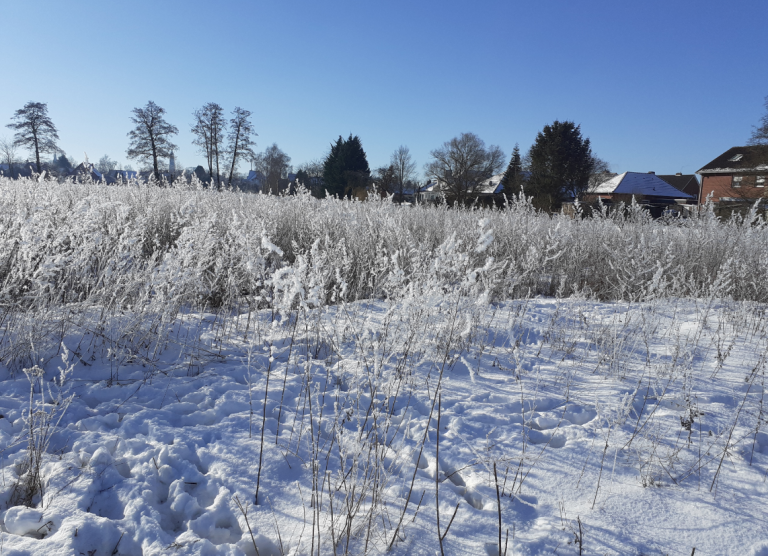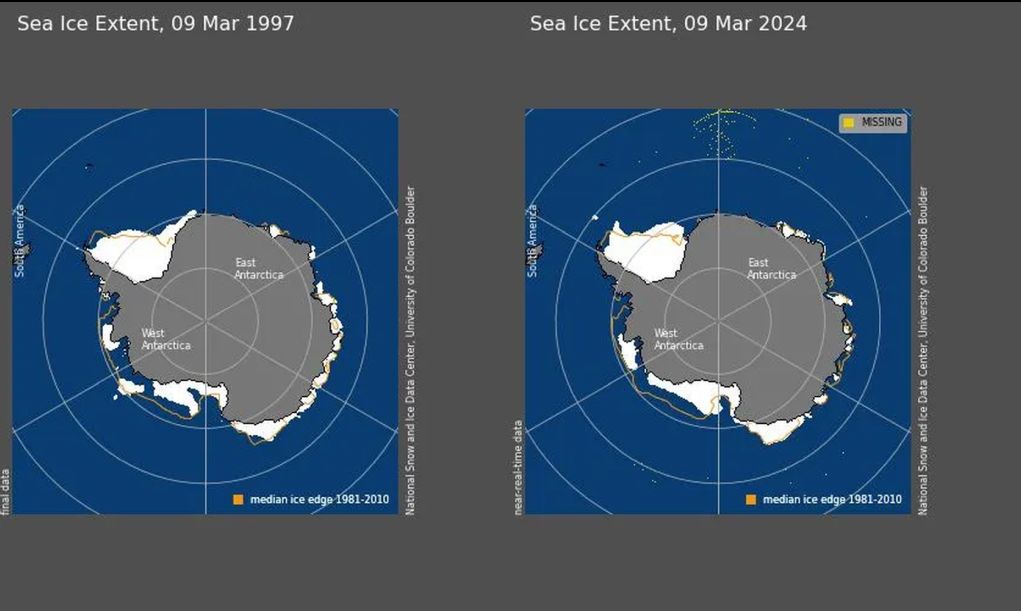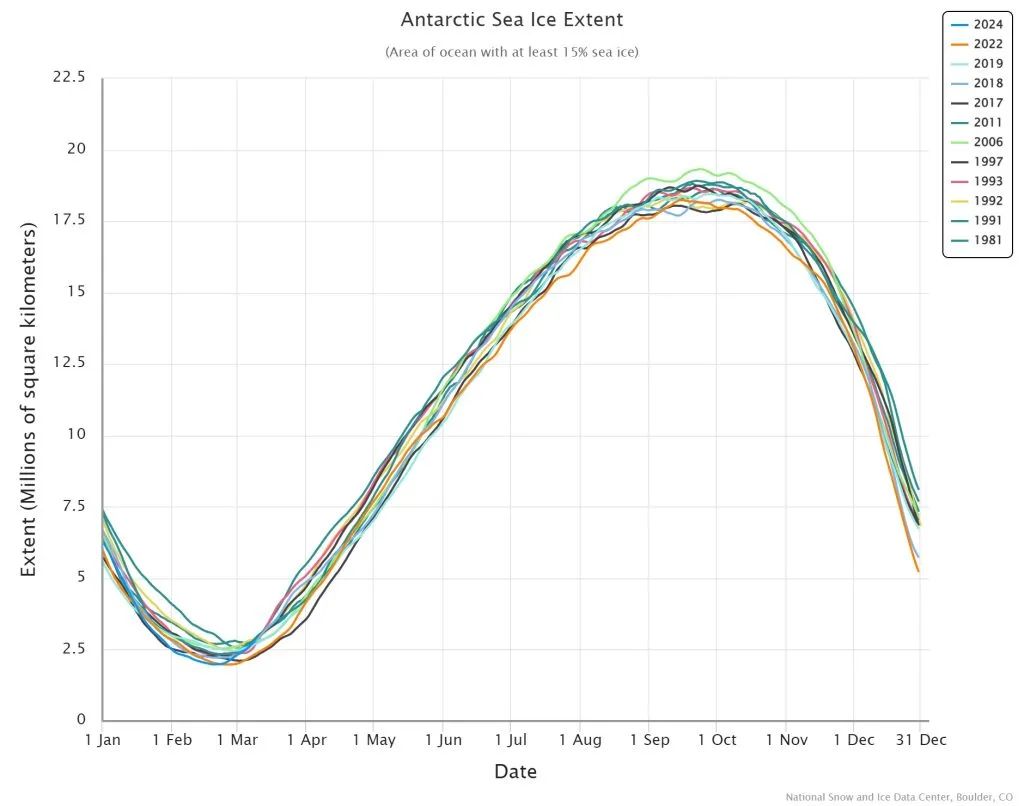Cold report No. 11 / 2024
By Chris Frey, Christian Freuer for EIKE.
Excerpts translated by P. Gosselin
Photo: © P. Gosselin
Heavy snowfall hit large parts of Europe recently, including southern Spain. Several provinces in the Andalusia region remain under a snow warning following a “wintry” weekend, according to the Spanish weather authority Aemet, after Storm Monica caused heavy snowfall, strong winds and/or rough seas. According to Aemet, the largest amounts of snow will accumulate in the southern foothills of the Sierra Nevada.
Another meter of snow in Newfoundland
A late winter snowstorm dumped a meter of fresh snow on Newfoundland.
Significant amounts of ice were also observed on the Avalon and Burin peninsulas.
Preliminary figures show that one meter of snow fell in Kilbride, over 80 cm in Bay Roberts and 79.7 cm in Paradise – to name just three locations.
Antarctic sea ice recovery
Anomalous/record-breaking cold continues to affect the lower part of the world. On Sunday, March 10, values below -60 °C were measured again in Vostok: -63.1 °C, to be exact.
As for Antarctic sea ice, a remarkable – and “overlooked” by the MSM – reversal of fortune is taking place. The once cripplingly low extent is now higher (3,165,625 km²) than it was 27 years ago (3,075,000 km²).
Just as in 1997, the ice extent today is greater than in 2023, 2022, 2019, 2018, 2017, 2011, 2006, 1993, 1992, 1991 and 1981:
Five dead from snowstorms in the Alps
Severe snowstorms have battered the European Alps in recent weeks and the death toll is rising.
Five missing skiers have “frozen to death” in the Swiss Alps while trying to build a cave to protect themselves from the elements, rescuers say. A sixth is still missing and an intensive search is underway.
It has been snowing heavily in the Alps recently, a fact barely reported by the warmth-addicted mainstream. In Macugnaga, Italy, for example, another 75 cm of fresh snow fell on Sunday, with more than 3 m accumulating at altitude.
Despite claims to the contrary by the MSM, this has been a good snow season for the European mountains, with most peaks and ski resorts above average in terms of snowfall.
Western Canadian cold wave costs 180 million dollars
According to the Insurance Bureau of Canada (IBC), the extreme cold snap in Western Canada in January led to insured losses of at least 180 million dollars.
In British Columbia, Alberta and Saskatchewan, initial estimates indicate that most of the damage was to personal property, such as water damage from burst pipes. These estimates do not include the “catastrophic losses” suffered by many farmers in places like the Okanagan Valley in British Columbia, where grape growers lost their entire crop this year.
The brutal mid-January freeze dropped temperatures to a “deadly” -27°C in key wine-growing regions in B.C.’s southern interior.
A February report from Wine Growers BC said it expected an “almost complete write-off of the 2024 vintage” with $346 million in lost revenue for vineyards and wineries.
“It was an unusual winter season with extreme variability in conditions across the country,” said Rob de Pruis of the IBC.
West gets buried by March snowstorms…
In a matter of days, a series of snowstorms that battered the Sierra Nevada changed the outlook for water supplies from a “1,200-year megadrought” to “help, we’re all going to drown,” according to federal resource managers (I’m paraphrasing a bit here).
After a four-day snowstorm that began on Leap Day, the snowpack in the Eastern Sierra increased by a record-breaking 30%.
By the end of the heavy snowstorm, above-average snowpacks were measured in the California and Nevada basins – a twist of fate that caused vehicles to get stuck and highways to be closed between the two states.
According to official data, the intensity of the four-day snowstorm was also among the strongest ever recorded. Since 1981, only three storms have brought more snow over four days than this year’s blizzard.
Nevada
Nevada also benefited from the increased snowfall in the Great Basin. Snow levels in the Upper Colorado Basin, for example, are now at 105% of normal. In addition, last year’s record snowpack has continued to buffer Nevada’s reservoirs and “allowed for some carryover,” according to Thomas Albright, interim climatologist for the state of Nevada.
The increasing snowpack this year could actually bring a longer period of rain (of more than two years in a row) for the first time this century, said Dan McEvoy of the Western Regional Climate Center.
“We’ve had more events since 2000, with some of the wettest and driest years on record in the last decade alone, but no consecutive trends,” McEvoy added.
Utah
The Alta ski area in northern Utah has also seen good snowfall in recent weeks.
After last year’s record snowfall, it may come as a surprise to hear that the snowpack on March 1, 2024 was actually two centimeters deeper than March 1, 2023 (386 cm) and only 4 centimeters away from beating the resort’s February record.
Alta averaged over 13.5 cm of snow per day last month, making it the third snowiest February on record.
“Severe snowfall” in Portugal
The Portuguese ski resort of Serra da Estrela reports that it has “the best conditions in years” after the “enormous snowfall” over the weekend.
Like most ski resorts in Europe, Serra da Estrela is experiencing a kind of post-season deluge, as a huge storm from Friday to Sunday buried lifts and buildings under meters of snow:
Serra da Estrela after a snowstorm in March 2024.
Despite the access problems, the area is fully open with 22 slopes.
Arctic sea ice above average
As with Antarctic sea ice extent – see above – the upper part of the world is doing exceptionally well, considering that this is the “hottest year in the last 125,000 years”.
The official data shows that Arctic sea ice extent is well above the multidecadal average:
It is also well above the 21st century average.
To illustrate this in a way that even the most deluded alarmist can understand, the extent of Arctic sea ice today is the same as it was in 1995, when Al Gore was Vice President:
There’s a reason we haven’t heard much about the Arctic in recent months, and that’s because there’s nothing to worry about.
Heavy snowfall in Colorado
A severe storm is currently bringing meters of snow to Colorado, leading to the cancellation of flights and the closure of a major highway.
The blizzard, which began on Wednesday evening, is not expected to subside until Friday. It brought more than 90 cm of snow to the higher elevations by Thursday evening, with another 60 cm expected by Friday morning. In Denver itself, about 20 cm fell on Thursday and another 25 cm is expected.
Loveland Ski Area announced that it is closed. The other is Eldora Mountain “because the plow and grader cannot access the slopes on Shelf Road.” According to a release from the area, at least one day of work is required.
This is the first time in over 20 years that Eldora has been closed due to snow. The last time was in 2003 around St. Patrick’s Day.
Stark weather change in Toronto
From spring-like warmth to the return of winter, Toronto won’t know where it stands this week with a 24 degree Celsius temperature difference and snow in the forecast.
A chilly and wet St. Patrick’s Day on Sunday will give way to a very cold Monday. The Weather Network is predicting a daytime high of -2°C on Monday, although the actual temperature could drop as low as -4°C overnight.
Wednesday saw highs of 20°C, and within a few days we will see frost and snowfall – only a centimeter or two, but what a shock to the system, what a change between extremes.
According to the Weather Network report, “Drivers should prepare for the return of winter as the threat of snowfall in southern Ontario is not over.”
New blast of cold air in China
The Chinese region of Xinjiang recorded a remarkably low temperature of -52.3 °C in February, a new national record.
The snowfall in February was also exceptional.
Stories also at: https://electroverse.substack.com/l









Hottest January ever
Hottest February ever
Hottest … (fill next month and continue)
Media has its own rules (see CCNow) and the Ministry of Truth is applying brainwash on us every day. Journalists must be “true believers”. How else could they keep on this kind of pushing BS from one day to the other.
[…] From NoTricksZone […]
[…] Kuva 1. Kuvankaappauslähde: https://notrickszone.com/2024/03/19/though-europe-was-mild-winters-been-a-beast-over-much-of-norther… […]
[…] Though Europe Was Mild, Winter’s Been A Beast Over Much Of Northern Hemisphere […]
[…] Though Europe Was Mild, Winter’s Been A Beast Over Much Of Northern Hemisphere […]
This set off the following chain of thought. Arguments are invited. Looking at the Oulu neutron counts, one sees that every other solar cycle has a flat top, and the counts are higher and longer, especially during weak solar cycles. This is caused by the earth’s magnetic field being parallel to the sun’s during one cycle and antiparallel the next. The neutrons are probably not the real actors, but the mesons muons and pions produced by cosmic ray collisions in the upper atmosphere. What’s going on up there? Does it affect the equivalent emissions height? If so, that automatically affects surface temperatures, and one would guess rainfall as well.